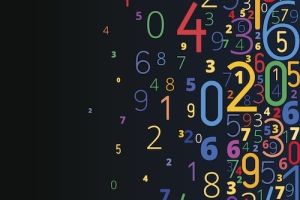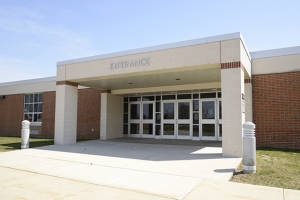
Is math homework giving you a headache? Do you dread hearing the words, “I hate math!” While math may not appeal to some children, it is helpful to everyday living, and strong math skills can open doors to exciting jobs after graduation. This school year, build a positive outlook and help your children do better in math by showing them it can be interesting and fun.
Here are 25 activities to support your efforts.
- Use measuring and fraction skills when you bake or cook with your children. This is a great way to show them the relevance of math in everyday life.
- At the grocery store, have your child figure out how many pounds of produce to get without going over a certain dollar amount. For example, say “Please weigh and bring me three dollars worth of granny smith apples.”
- Study and graph weather. Make bar graphs, circle graphs or pictographs for sunny, rainy, cloudy or snowy days. Find the mean, median, range and mode for the high and low temperatures each month.
- Research cool careers that use math. Some interesting ones include architect, astronaut, fashion designer, forensic analyst and computer programmer. A fun resource for tweens and teens is the book Careers: The Graphic Guide to Finding the Perfect Job for You.
- Learn about the lives of famous mathematicians and what they accomplished (for instance, Albert Einstein, Isaac Newton and John Nash, who inspired the movie, “A Beautiful Mind”).
- Let your kids plan a special dinner. Then give them a budget and let them shop for the ingredients without going over the budget.
- Volunteer in your child’s math class. You will discover what your child is learning, the teacher’s expectations and how to better help your child at home.
- If your child is struggling in math, ask your child’s teacher to recommend a tutor or call the math department at your local high school or university to find a qualified tutor.
- Plan a trip together and calculate the miles you will travel at a designated speed. Predict how long it will take to get there.
- Give your child an allowance that she has to manage. Together decide how much she will save, spend and give away.
- If your child is a teen with a job, help her write a budget and open a savings account.
- When shopping for a new toy, backpack or school supplies, look at sale flyers from several stores. Have your child find which store has the best bargain.
- Play “store” with young children. Let them pick out toys and household items and put price tags on them. Then give them money to practice counting and paying for the items.
- Read math picture books like The Greedy Triangle, The Grapes of Math, The Doorbell Rang, The Very Hungry Caterpillar or How Big is a Foot?
- Have your tween or teen pick out the make, model and year of a car they would like to buy when they are 18. Look up the value of the car and figure out how much they will have to earn every week until they are 18 to buy the car.
- Walk around your house and find examples of parallel and perpendicular lines in doorways, walls, furniture and more.
- Find various geometric shapes around your house and neighborhood. Draw or take photographs and label the shapes and what they comprise (for instance, the roof, the mailbox, the deck railing) and make a book about shapes for a younger sibling.
- Have daily countdowns to special events.
- Don’t promote gender stereotypes that suggest boys are better at math and girls are better at reading. Research shows that while girls do well in math in middle school and high school, women are underrepresented in post-graduate STEM (science, technology, engineering and math) jobs.
- Play card games that involve math (for example, Uno and Crazy Eights).
- Make up a word problem of the day and have your child solve it. Keep it fun and funny.
- Cut food into fractions and talk about it. Use the food fractions to introduce equivalent fractions.
- Take a tour of your local bank. Talk to your child about words like loan, interest and principal.
- Celebrate Pi Day in March. Talk about what it means and why it’s important. Make your child’s favorite pie or check out our list of The Best Places to Get Pie in San Diego!
- Keep math resources on hand. Tools like rulers, tape measures, tangrams, pattern blocks, play money, fraction bars, counters and geometric shapes are great for kids to make discoveries while playing. Also keep a good math dictionary on your bookshelf to help with terms you may have forgotten.
Janeen Lewis is a freelance writer and a teacher. While math was not her favorite subject in school, she has grown to love teaching it to children.

















